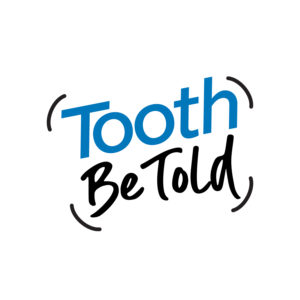
Can you handle the Tooth?
Every day I’m honored to work with a team of incredible businesspeople, scientists and veterinary professionals. Today, I’m thrilled to unleash their expertise via OraStripdx’s new blog, “Tooth Be Told.”
By Mary L. Berg BS, RVT, LATG, VTS (Dentistry)
Oral disease is the most prevalent disease in dogs and cats. Recent studies indicate that the prevalence is even higher than the previously reported 80% of adult dogs and cats having some form of oral disease.
Because the early stages of oral disease don’t cause the animal pain or lead to feeding issues, it is often ignored by both pet owners and occasionally by pet care providers. However, knowing more about periodontal disease – also known as PD, which includes gingivitis and periodontitis – will help you diagnose the issue as well as educate patients about the importance of preventive dental care. OraStripdx is a breakthrough test that plays a major role in early diagnosis, but first, I want to define the disease itself and discuss its causes and symptoms.
Definition: What is Periodontal Disease (PD)?
PD is an infectious disease caused by plaque and the resulting inflammatory response. Periodontal disease is present when plaque bacterial-induced inflammation has affected the gingival and other tissues of the periodontium, which include:
How PD Progresses
The formation of plaque is where periodontal disease begins. Plaque is a soft, gelatinous matrix consisting of bacteria and bacterial by-products that develops on the tooth surface, both above and below the gumline. Both pets and humans develop plaque from normal activity, including eating. Plaque starts with a biofilm that forms on the teeth within minutes of a dental cleaning and is usually clear to light yellow. It is typically not visible to the human eye, so you may need to use disclosing agents or an ultraviolet light to visualize. If plaque is not removed, it will calcify into calculus (tartar) within 48 to 72 hours.
Undisturbed plaque can lead to gingivitis, which is an inflammation of the gingival tissue. Gingivitis is present before periodontal disease and is characterized by erythema and bleeding.
Gingivitis is preventable and reversible, unlike the later stages of periodontal disease! A thorough dental cleaning and good home care can reverse gingivitis.
If gingivitis is not resolved, subgingival plaque can begin to destroy the periodontium. As the plaque grows below the gum line, the bacteria change from a gram positive, aerobic bacterium to a gram-negative, anaerobic, black-pigmenting bacterium. These pathogenic bacteria produce and release inflammatory mediators and cytokines that activate neutrophils and release proteolytic enzymes. In addition to this, the bacteria metabolize thiols to survive. The thiols are responsible for the malodor associated with periodontal disease.
Together, all the factors destroy the epithelial tissues, which increase sulcus depth, thus damaging the periodontal ligament, and eventually, the alveolar bone is destroyed. Calculus – calcified plaque – is often blamed for causing periodontal disease. However, calculus is only part of the picture. It may irritate the gingiva, and the roughened surface of the calculus provides more surface area for plaque to grow. The more calculus present, the more plaque develops…and the cycle continues.
Contributing factors for PD
Although the majority of pets have some form of PD, many factors may contribute to its development, including:
Diagnosis and Classification of Periodontal Disease
The degree of severity of periodontal disease relates to a single tooth — a patient may have teeth with different stages of periodontal disease. The diagnosis should be for the worst tooth in the mouth.
The stages of periodontal disease can be used to help price your periodontal therapies but also need to be recorded so that the progression of the disease can be determined. These stages are determined by either measuring clinical attachment level or radiographically.
Treatment of Periodontal Disease
Once periodontal disease is diagnosed, there are multiple treatment options.
The Importance of Home Care
Pet owners practicing regular dental care at home is a vital component of periodontal treatment. All treatments listed above will be temporary and may not be successful if the owner does not comply with home care instructions. Daily tooth brushing is the gold standard, but not every individual can or is willing to brush their pet’s teeth.
Early Detection, Prevention and Increased Compliance
Periodontal disease can be difficult to diagnose in the early stages, and I can’t write a blog post about periodontal disease without mentioning OraStripdx as a diagnostic test. OraStripdx is a simple, 10-second test that can be performed in the exam room with the pet owner to demonstrate the presence of periodontal disease.
The test strip detects thiols that are metabolized by the pathogenic bacteria lurking below the gumline. The strip will turn yellow if the thiols are present demonstrating the presence of infection to the pet owner.
OraStripdx is better at detecting PD than a visual exam, and sharing the results of the OraStripdx test strip has been shown to increase client compliance in both home care and in scheduling their pets for a dental cleaning. Early diagnosis of periodontal disease, and your education about the disease itself and what it can lead to, will help your clients practice preventive care and hopefully avoid major dental interventions.
About Mary L. Berg
A nationally known expert in the veterinary dental world, Mary is president and founder of Beyond the Crown, which provides dental training to veterinary teams nationwide. Mary worked in research for more than 31 years, specializing in products aimed at improving the oral health of companion animals. She was also a practice manager and dental technician specialist for seven years, and is currently involved in NAVTA, AVDT, AVMA, AAVSB, F4VD, and KVTA. In addition to publishing numerous articles and several dentistry textbooks, Mary’s awards include NAVTA Veterinary Technician of the Year in 2020 and AVDT’s Excellence in Dentistry Education in 2019.

Every day I’m honored to work with a team of incredible businesspeople, scientists and veterinary professionals. Today, I’m thrilled to unleash their expertise via OraStripdx’s new blog, “Tooth Be Told.”

Louisville’s PDX Biotech is one of five start-up companies to win at the 2023 Purina Pet Care Innovation at the Global Pet Expo. The local company won for its veterinary dental product OraStripdx…